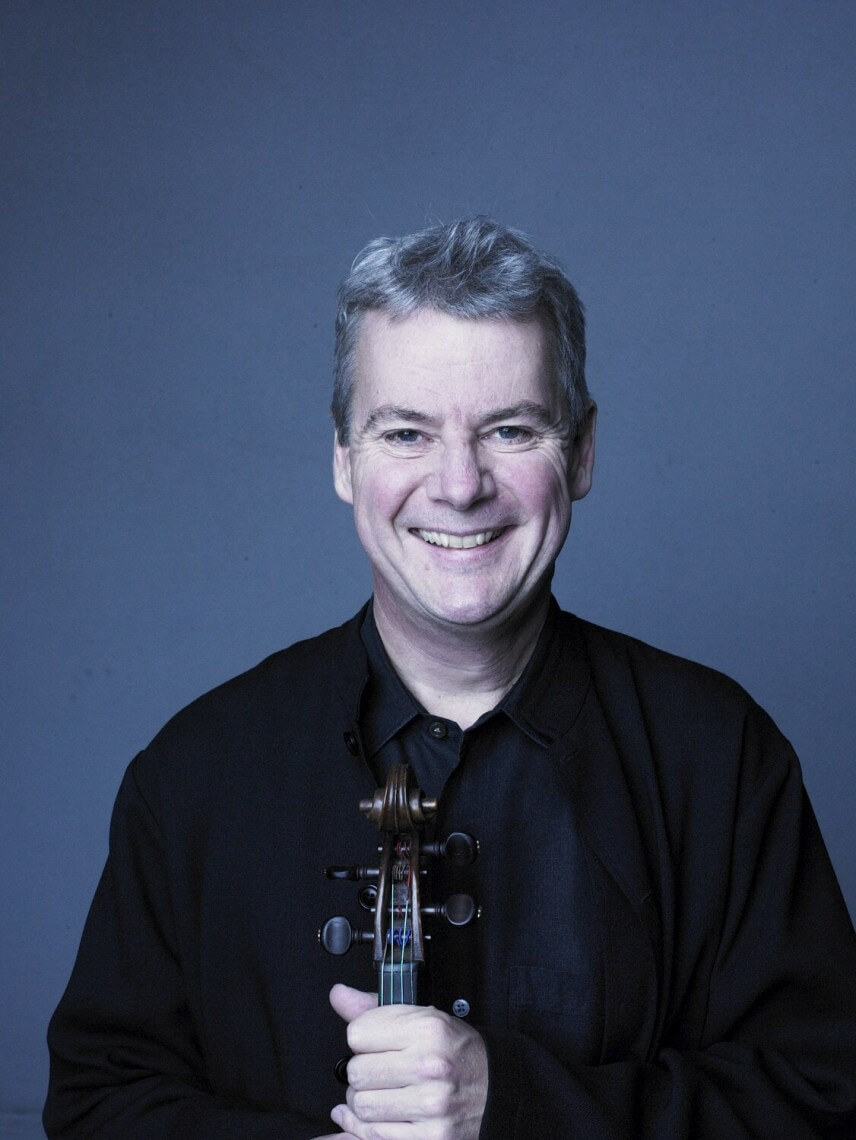
Women’s Musical Club of Toronto: Dannthology at Walter Hall, Thursday, April 7.
“Dannthology” was the title of a recital by the Toronto violist Steven Dann, together with family members (sons Nico and Lucas, daughter Robin, and daughter-in-law Ilana Zarankin, who is married to Nico) and friends (bassist Joel Quarrington and pianist James Parker), for the Women’s Musical Club of Toronto on Thursday afternoon, April 7 in Walter Hall. For only the second time in its 118-year history, the members of the WMCT arrived to find a drum set on the stage (the first time was for trumpet player Jens Lindemann’s recital last season). The drum set, along with timpani and sundry other smaller percussion instruments, was played with much expertise by Nico in two works on the programme. The other three family members appeared only in a new work by Zosha di Castri, about which more anon.
Dann provided charmingly adroit, witty and informative introductions to each of the works on the program. He began by observing that the last time he gave a solo recital in Walter Hall was nearly 40 years ago; the occasion was his graduating recital in 1977. Since then he has enjoyed an extraordinarily accomplished international career as an orchestral, chamber, and solo viola player. The recital began with him alone on stage, playing Heinrich Biber’s Passacaglia in C minor (originally for solo violin in G minor), which is based on a descending tetrachord – the ubiquitous basso lamento that has been used countless times over the centuries (including, as Dann wryly noted, for the song “The Cat Came Back”). The work provided an ideal showcase for Dann’s beautiful, warm tone and impeccable musicianship.
Maximum contrast was provided by the next work, Peter Lieberson’s Rumble (1994), a brief and extremely clever suite of character pieces that was written for Dann after the two men met in Halifax (Lieberson was head of the Shambala Centre there, and Dann was participating in the Scotia Festival of Music). The work was notable for superb ensemble work and an excellent rhythmic interplay between Dann, his son Nico on percussion, and double bassist Joel Quarrington.
Robert Schumann’s Märchenbilder, Op. 113 was next, with Dann accompanied by James Parker on piano. Dann noted that the work was inspired by three of the Brothers Grimm fairy tales: Rapunzel, Rumpelstiltskin, and Sleeping Beauty. It is a richly varied suite of four character pieces, ending with a lullaby of absolutely heartbreaking beauty that was perfectly realized by Parker and Dann and provided an ideal conclusion to the first half of the programme.
The second half opened with Near Mute Force, a work commissioned by the WMCT from the much in demand young composer Zosha di Castri, who was educated at McGill and Columbia, and was hired at Columbia in 2014 immediately after completing her DMA degree in composition there. This season alone has seen major works by di Castri performed by the National Arts Centre Orchestra (Dear Life, to a text by Alice Munro, premiered in September 2015) and the Esprit Orchestra (her 2013 piece Lineage, performed in October 2015). Near Mute Force is for two singers (both amplified), viola, piano, and percussion, and featured Dann and his four family members — the entire “Dann clan” as di Castri noted in her remarks on the piece.
The text is by the Toronto-born poet Rivka Galchen, who also teaches at Columbia. In her note about the piece, di Castri states that her initial inclination was to write “a contemporary take on the lullaby,” as both she and Ilana Zarankin had recently given birth.
The music that emerged is indeed sometimes soothing and gentle (as in the hushed ending of the work, the effect of which was unfortunately marred by an unfortunately timed phone alarm in the audience), but at other times was rather more chaotic and troubling. A challenge that di Castri faced was to write music that combines improvisation (for the younger Danns who, though classically trained, have now migrated to jazz and popular music idioms) and a classically notated score. The most interesting music was given to the viola and percussion (the work opened with a barrage of notes in the viola that brought to mind Berio’s Sequenza VI). The amplification of the voices paradoxically made it difficult for this listener to hear the text (which was not printed in the programme), and the piano was not given much of interest to contribute to the conversation. But overall di Castri managed to find a harmonious reconciliation of the contrasting idioms at play in the work, and the WMCT audience gave the composer and performers a very warm reception.
The final work was Brahms’s Viola Sonata in F minor, Op. 120, no. 1 with Parker again accompanying Dann. It was, quite simply, a superlative performance in every respect, and sent this audience member away with the lovely main tune of the finale pleasantly echoing away in my ears for many hours afterwards — a sure sign of great music and great music making.
Note: Robin Elliott is the co-ordinator of the Tuning Your Mind series of pre-concert lectures for the WMCT.
#LUDWIGVAN
Want more updates on Toronto-centric classical music news and review before anyone else finds out? Get our exclusive newsletter here and follow us on Facebook for all the latest.
- SCRUTINY | Beethoven’s ‘Ghost Trio’ Highlights Intriguing Mixed Program By Montreal’s Trio Fibonacci In Toronto Return - October 4, 2019
- SCRUTINY | Poulenc Trio Shows Us Why The World Needs More Oboe, Bassoon, And Piano - October 5, 2018
- SCRUTINY | Peter Oundjian Gives A Sterling “Thank You” To Toronto - June 22, 2018



